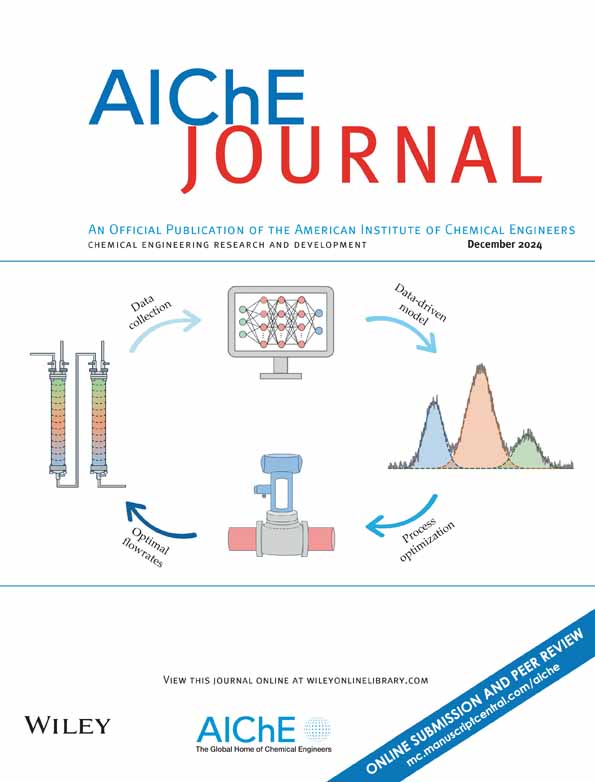用新型界面探针法研究传质过程中的动态界面张力
IF 3.5
3区 工程技术
Q2 ENGINEERING, CHEMICAL
引用次数: 0
摘要
动态界面张力(DIFT)是两相流耦合传质过程的关键参数。在传质过程中,溶质浓度的变化是影响(DIFT)的关键因素。然而,现有的研究很少能同时测定DIFT和溶质浓度。这对开展深入调查和准确预测DIFT提出了挑战。本研究提出了一种新的界面探针方法来同时测量溶质浓度和DIFT。考察了溶质浓度和传质通量对DIFT的影响。结果表明,DIFT不仅受溶质浓度的影响,还与传质通量相关。根据实验结果,建立了DIFT与溶质浓度和传质通量之间的预测模型。该模型对我们目前和以前的研究报告的实验结果具有广泛的适用性。在未来,该模型将成为预测液液耦合传质流动行为的理论基础。本文章由计算机程序翻译,如有差异,请以英文原文为准。
Study on the dynamic interfacial tension during mass-transfer process using a novel interface probe method
Dynamic interfacial tension (DIFT) is a key parameter in two-phase flow-coupling mass transfer process. The variation in solute concentration is a critical factor influencing (DIFT) during mass transfer process. However, existing studies rarely achieve the simultaneous determination of DIFT and solute concentrations. This poses challenges for conducting in-depth investigations and making accurate predictions regarding DIFT. In this study, a new interface probe method was developed to simultaneously measure the solute concentration and DIFT. The effects of solute concentration and mass-transfer flux on DIFT were investigated. The results demonstrated that DIFT was not only influenced by solute concentrations, but also correlated with the mass-transfer flux. Based on the experimental results, a predictive model is established that correlates the DIFT with solute concentration and mass-transfer flux. This model shows wide applicability to the experimental results reported in both our present and previous studies. In the future, this model will be a theoretical basis for prediction of flow behavior in liquid–liquid flow coupling with mass transfer.
求助全文
通过发布文献求助,成功后即可免费获取论文全文。
去求助
来源期刊

AIChE Journal
工程技术-工程:化工
CiteScore
7.10
自引率
10.80%
发文量
411
审稿时长
3.6 months
期刊介绍:
The AIChE Journal is the premier research monthly in chemical engineering and related fields. This peer-reviewed and broad-based journal reports on the most important and latest technological advances in core areas of chemical engineering as well as in other relevant engineering disciplines. To keep abreast with the progressive outlook of the profession, the Journal has been expanding the scope of its editorial contents to include such fast developing areas as biotechnology, electrochemical engineering, and environmental engineering.
The AIChE Journal is indeed the global communications vehicle for the world-renowned researchers to exchange top-notch research findings with one another. Subscribing to the AIChE Journal is like having immediate access to nine topical journals in the field.
Articles are categorized according to the following topical areas:
Biomolecular Engineering, Bioengineering, Biochemicals, Biofuels, and Food
Inorganic Materials: Synthesis and Processing
Particle Technology and Fluidization
Process Systems Engineering
Reaction Engineering, Kinetics and Catalysis
Separations: Materials, Devices and Processes
Soft Materials: Synthesis, Processing and Products
Thermodynamics and Molecular-Scale Phenomena
Transport Phenomena and Fluid Mechanics.
 求助内容:
求助内容: 应助结果提醒方式:
应助结果提醒方式:


